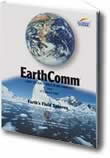Below are storylines that were designed by Cheryl Mosier, an Earth Science Teacher at Columbine High School in Littleton, Colorado.
We also include the following in this chapter:
- Weather Cyclers (map reading, weather forecasts)
- Weather readings (storms, clouds, hurricanes, phenomenon)
Big Idea:
- Fluid spheres within the Earth system include the hydrosphere, atmosphere, and cryosphere, which interacts and flow to produce ever-changing weather, climate, glaciers, seascapes, and water resources. These affect human communities, shape the land, transfer Earth materials and energy, and change surface environments and ecosystems.
- Natural hazards associated with Earth processes and events include drought, floods, storms, volcanic activity, earthquakes and climate change. They pose risks to humans, their property and communities. Earth science is used to study, predict, and mitigate natural hazards so that we can assess risks, plan wisely, and acclimate to the effects of natural hazards.
|
|
Activity 1 – What Conditions Create Thunderstorms? |
Activity 2 – A Thunderstorm Matures |
Activity 3 – Tracking Thunderstorm Movement through Radar |
Activity 4 – Severe Weather Hazards: Floods |
Activity 5 – Lightning and Thunder |
Activity 6 – Severe Winds and Tornadoes |
|
Key Evidence Learned |
- how density of air changes with temperature - relationship between frequency and topography - how air masses of different temps interact
|
- relationships between air temp and water vapor - cloud types - cloud formation |
- use radar to track storm movement - factors that allow thunderstorms to last for long periods of time - look at intensities of storms |
- topo maps and flow of surface water - factors that allow storms to persist - relationship between population growth and flood fatalities - read accounts of CO floods - safety precautions |
- data on lightning injuries and fatalities - what causes lightning - myths and misconceptions - safety precautions |
- map tornado frequency - relationship between thunderstorm locations and tornadoes - relationship between tornado occurrence and time of year - safety procedures |
| Connections To: |
- relate occurrence to temperature - where thunderstorms are frequent in the US - why severe weather occurs during specific seasons |
- conditions needed for thunderstorms to mature - conditions that lead to severe weather - structure of the atmosphere |
- how radar is used to track storms |
- connection between topography and flash flooding - understand that wise land-use planning can help reduce damage |
- relationship between lightning and thunder - transfer of energy from the atmosphere to clouds or surface |
- likelihood of tornadoes in CO - misconceptions about safety |
|
Big Idea |
- thunderstorms and their impact on a community - hazards of thunderstorms |
- hazards of thunderstorms - understanding clouds and their relationship to weather |
- how t-storms develop - how longer storms cause more damage - t-storm risks and hazards |
- how to mitigate damage from floods - impact on humans due to floods |
- lightning safety
|
- safety - how thunderstorms and tornadoes are related |
|
Real Life and Chapter Challenge |
- t-storm formation in CO - types of thunderstorms and their formation - hazards in CO |
- cloud types - layers of the atmosphere - thunderstorm hazards |
- storm risk in CO - how radar is used
|
- local flood stories (Big Thompson, Ft. Collins) - topographies role in flooding |
- lightning safety - lightning hazards |
- safety & misconceptions - hazards - location of tornadoes in CO |
|
Geosphere |
- relationship of occurrence with topography |
|
|
- topo role in flooding - wise land use planning |
- energy added to the surface |
- damage to the surface from tornadoes |
|
Hydrosphere |
- how the evaporation of water fuels the development |
- how clouds are formed
|
- how evaporation of more water keeps storms going and developing |
- damage from water in floods |
- how lightning forms - transfer of energy |
- storm formation and tornado development |
|
Atmosphere |
- thunderstorm formation - air masses interactions |
- layers of the atmosphere - storm development |
- tracking storms - movement of storms |
- how storms persist |
- transfer of energy |
- transfer of energy |
|
Cryosphere |
|
|
|
|
|
|
|
Biosphere |
- impact across the US during different seasons |
- storm development
|
- hazards to humans |
- how floods harm humans - damage mitigation - prevention - safety |
- injuries and fatalities - safety
|
- safety |
|
State Standard |
4.2.b, 4.2.c, 4.2.d, 4.2.e |
4.2.a, 4.2.c, 4.2.d, 4.3.c |
4.2.b, 4.2.c, 4.2.d, 4.3.c |
4.2.d, 4.2.c |
4.2.a, 4.2.c, 4.2.d |
4.2.c, 4.2.d, 4.2.e |
|
Jeffco Standard |
4.2.c, 4.2.d, 4.2.e |
4.2.a, 4.2.c, 4.2.d, 4.3.a |
4.2.b, 4.2.c, 4.2.d, 4.3.a, 4.3.c |
4.2.d |
4.2.c, 4.2.d |
4.2.c, 4.2.d |
|
CSAP Frame |
4.2.2.a, 4.2.3.a, 4.2.3.c, 4.2.4.a, 4.2.4.b, 4.2.5.a |
4.2.1.a, 4.2.1.b, 4.2.1.c, 4.2.1.d, 4.2.3.a, 4.2.3.c |
4.2.2.a, 4.2.3.a, 4.2.4.a, 4.2.4.c |
4.2.4.a, 4.2.4.c |
4.2.3.a, 4.2.4.a, 4.2.4.b, 4.2.4.c |
4.2.4.a, 4.2.4.b, 4.2.4.c, 4.2.5.a |
|
Jeffco PE |
W&C 1c, 2a, 2c |
W&C 1a, 1b, 2a |
W&C 2b |
W&C 2a |
W&C 2a |
W&C 2a |
- misconceptions about safety

